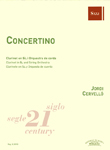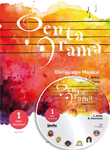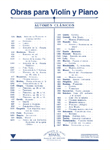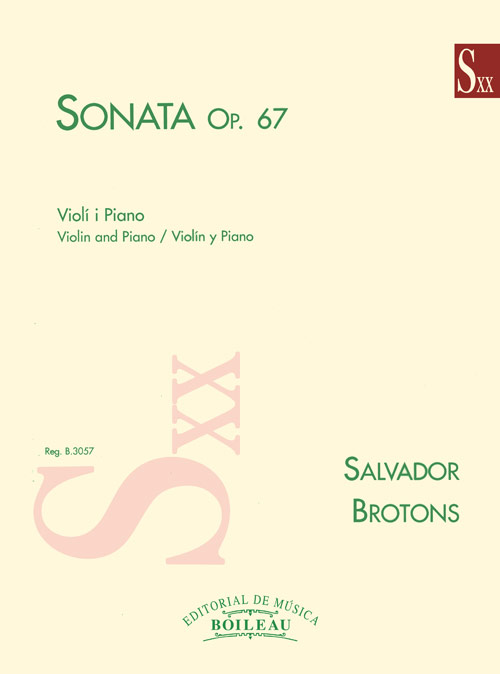WORKS
- Genre
-
Musical education
- Choir
- Counterpoint
- Dictation
- Direction
- Exam study manuals
- General music pedagogy
- Harmony
- Hearing
- Illustrations / Posters
- Improvisation / Sight reading
- Instrument methods
- Instrument pedagogy
- Instrumental study repertoire
- Instrumentation and orquestration
- Musical language
- Solfège
- Templates
- Theory and analysis
-
Incidental music
-
Lined paper
-
Flamenco
-
Religious music
-
Classical / contemporary
-
Modern music
-
Folk music / traditional
-
Musicology
-
Divulgation
-
Games and hobbies
-
Music therapy
-
Children / Youth
-
- Instruments
- Ensemble
- Difficulty level
- Period
- Genre
SOPORTE
Search
Find here: books, scores, composers, digital pieces, cd's
Best-selling works
Our classics

Newsletter
I wish to be informed of the news about your music
We have received your e-mail correctly
Multimedia
Sonata, op. 67
Violín y Piano
BROTONS, SalvadorBROTONS, SalvadorBROTONS, SalvadorReg.: B.3057
20,40 €
P.V.P. (VAT included 4%)
Add to cart
- Ensemble: Duos: With piano.
- Genres: Classical / contemporary: Chamber.
- Product format: Partitura + particellas
- Difficulty level: Advanced-superior
- Period: 2nd half S. XX - XXI
- Publishing house: Editorial Boileau
- Collection: Siglo XX
- No. of pages: 40+16
- Measure: 31,00 x 23,00 cm
- Lenght: 15'00"
- ISBN: 978-84-8020-175-9
- ISMN: 979-0-3503-0505-4
- Available in digital: No
- Available for rent: No
This Sonata for violin and piano op.67 was composed in 1994 after a long persistence from the eminent violinist and friend Jaume Francesch. The sad part of this composition was that the violinist Jaume Francesch, to whom I dedicated the piece, was not able to premiere it since he passed away the same year. Manuel Guillén premiered it brilliantly the next year.
As all my sonatas for instrument and piano, the piano has a role as important as the soloist interacting with him/her in a true duo. A gentle lyricism dominates the exposition of the first movement in «sonata» form. The music in 5/4 flows delicately in all the tessitura of the violin with subtle textures. In its development section the music becomes more aggressive and rhythmic while always continuing this magic ambience, the first theme of the slow movement has an introductory character through a high and distant melody in harmonics presented by the soloist which repeats three more times in fughe style by the piano each time an octave lower. After a short but intense interlude by the piano, the violin presents de principal theme of the movement rhythmically calm and expressive, which progressively becomes faster and tenser. Once the culmination of the piece is reached, the music becomes calmer to find a very relaxed end presenting once more both themes in a mirror form.
The last movement, un ternary rhythm with marked accents and hemiolias, is written in a modified rondo form. The central part is totally based on the first theme of the second movement where it achieves an exciting development. A fast and energetic Coda ends effulgently the piece.
Salvador Brotons
I. Allegro non troppo
II. Larghetto espressivo
III. Allegro robusto








